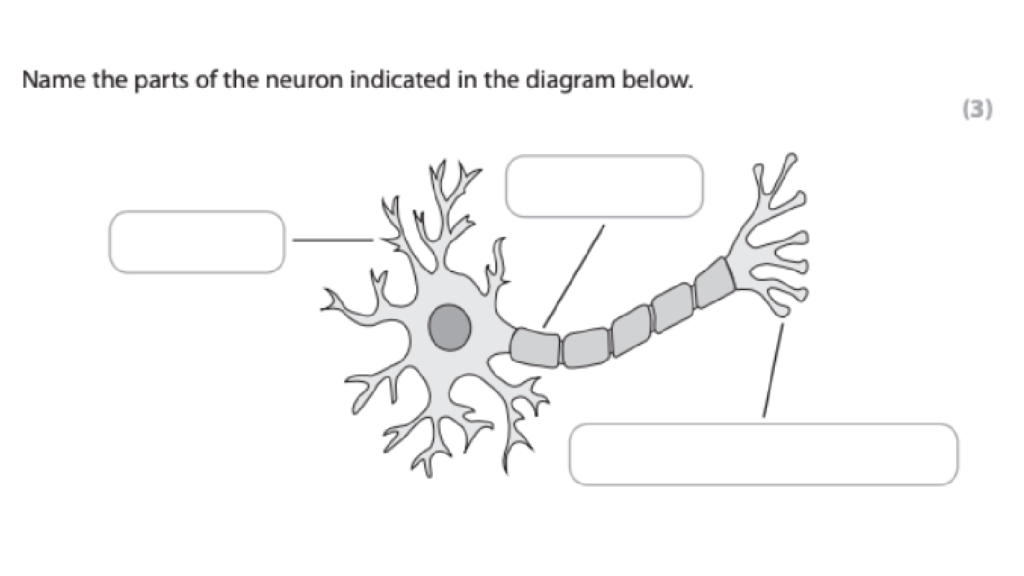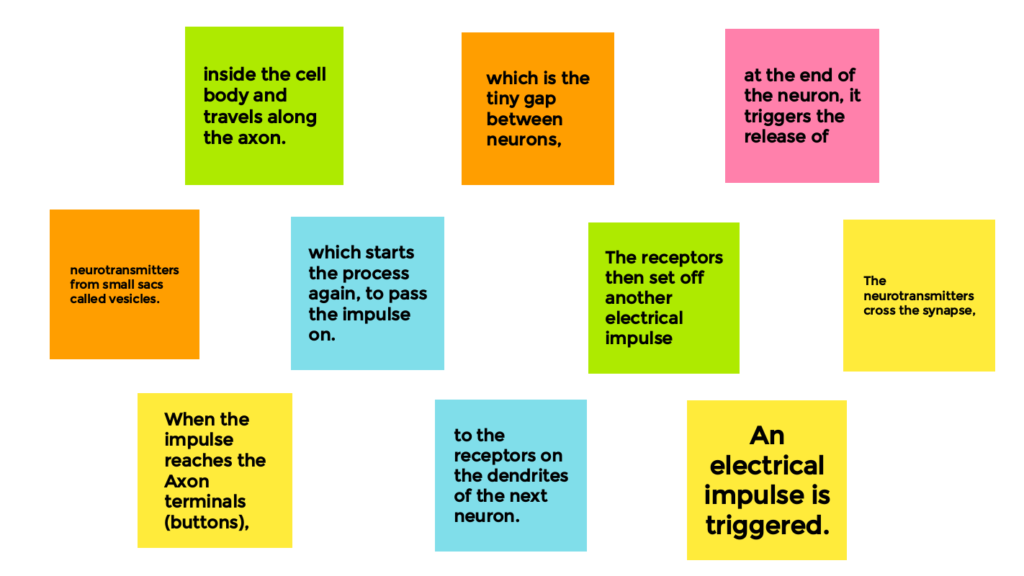Specification
- The role of the central nervous system (CNS) and neurotransmitters in human behaviour, including the structure and role of the neuron, the function of neurotransmitters and synaptic transmission.
The Central Nervous System
The central nervous system (CNS) is the body’s control centre, composed of the brain and spinal cord. The brain is the most complex organ in the body and is responsible for controlling and coordinating all of the body’s functions. It is divided into several major regions, including the cerebrum, cerebellum, and brainstem.
The cerebrum is the largest and most complex part of the brain. It is divided into two hemispheres, the left and right, which are connected by the corpus callosum. The cerebrum is responsible for consciousness, movement, sensation, perception, reasoning, and memory.
The cerebellum is located under the cerebrum and is responsible for coordinating movement and balance. It also plays a role in cognitive functions, such as attention and language.
The brainstem connects the cerebrum and cerebellum to the spinal cord and is responsible for regulating vital functions such as breathing, heart rate, and blood pressure. It also contains important relay nuclei that are involved in the regulation of consciousness, sleep, and arousal.
The spinal cord is a long, delicate tube of nerve tissue that runs from the brain down through the centre of the back. It is protected by the vertebral column and is responsible for transmitting signals between the brain and the rest of the body. The spinal cord is also divided into several regions, including the cervical, thoracic, lumbar, and sacral regions. The spinal cord is also responsible for reflexes, which are quick and automatic responses to certain stimuli.
The Neuron
A neuron is a type of cell that is specialized for transmitting information throughout the body. They are the basic building blocks of the nervous system, and are responsible for transmitting electrical signals, or nerve impulses, between different parts of the body.
A typical neuron has three main parts: the cell body, dendrites, and an axon.
The cell body, also known as the soma, contains the cell’s nucleus and other organelles. It is the metabolic centre of the neuron and is responsible for maintaining the cell’s health and survival.
Dendrites are short, branching extensions of the cell body that receive signals from other neurons. They are covered in small protrusions called spines, which increase the surface area available for synaptic connections.
The axon is a long, thin extension of the cell body that carries signals away from the neuron. It can be several feet long in some neurons, and can be covered in a fatty substance called myelin, which helps to insulate the axon and increases the speed at which signals can travel. The end of the axon is called the terminal bouton, which contains neurotransmitters, chemical messengers that transmit signals to other neurons or to muscles or glands.
Synaptic Transmission
Synaptic transmission is the process by which a nerve impulse, or action potential, is transmitted across a synapse, or the junction between two nerve cells, from the axon of one neuron to the dendrites or cell body of another.
The process begins with the arrival of an action potential at the axon terminal of the presynaptic neuron. This triggers the release of neurotransmitters, chemical messenger molecules stored in vesicles, from the terminal into the synapse.
The neurotransmitters then bind to specific receptors on the postsynaptic neuron, located on the dendrites or cell body. This binding can have different effects on the postsynaptic neuron, depending on the type of neurotransmitter and receptor involved. For example, some neurotransmitters, such as glutamate, can excite the postsynaptic neuron and make it more likely to fire an action potential, while others, such as GABA, can inhibit it and make it less likely to fire.
After the neurotransmitters have done their job, they are either broken down by enzymes or taken back up into the presynaptic neuron to be reused or stored for later. This process is called reuptake.
There are many different neurotransmitters, each with their own specific function. Imbalance or dysfunction in neurotransmitters is associated with various diseases, such as depression, anxiety, and schizophrenia.
Past Paper Questions
- State one neurotransmitter that affects human behaviour. (1) October 2018
- State the function of neurotransmitters. (1) January 2022
- Explain one weakness of the function of neurotransmitters as an explanation of human behaviour. (2) January 2022
- Describe the role of the neuron in human behaviour. (3) January 2018
- Describe the role of the central nervous system (CNS). (3) January 2020
- Synaptic transmission occurs throughout the body, including in the brain. Describe what is meant by ‘synaptic transmission’. (3) June 2018
- Charong picked up a hot pan and dropped it on the floor. Describe the role of the central nervous system when Charong dropped the hot pan. (3) October 2017
- Explain one weakness of using neurotransmitters to explain human behaviour. (2) October 2018
- Evaluate whether the role of neurotransmitters can fully explain human behaviour. (8) October 2016
Resources



